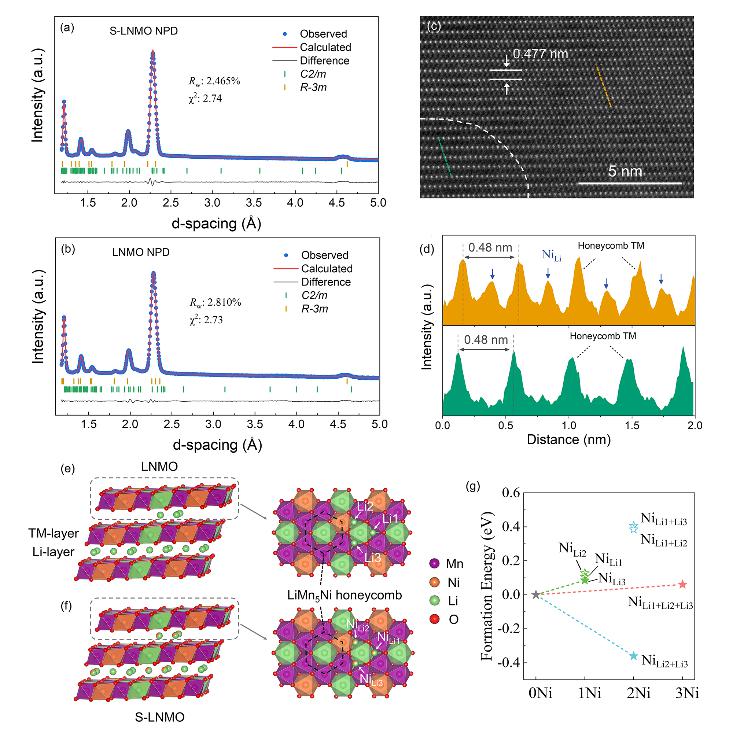A research team led by Prof. Zhenbo Wang from the School of Chemistry and Chemical Engineering at the Harbin Institute of Technology (HIT) has made a significant breakthrough in improving the stability of lithium-rich cathode materials for lithium-ion batteries. Their study, titled A Cable-Stayed Honeycomb Superstructure to Improve the Stability of Li-Rich Materials via Inhibiting Interlaminar Lattice Strain, was published in Advanced Materials, offering a novel strategy for developing next-generation high-energy-density battery cathodes.
Lithium-rich cathode materials, with their exceptional capacity advantages, are considered ideal candidates for next-generation commercial lithium-ion batteries. However, challenges such as capacity/voltage decay and irreversible oxygen release have hindered their practical application, making effective modification strategies critical.
To address these issues, the team designed a unique "cable-stayed honeycomb superstructure" in the lithium-rich cathode material Li1.2Ni0.2Mn0.6O2. This innovative superstructure plays a pivotal role in suppressing capacity degradation and irreversible oxygen release. During charging process, the superstructure promotes in-plane expansion of unit cell along the a-axis while inhibiting interlayer stretching along the c-axis, significantly enhancing the cycling stability of the layered material. Electrochemical tests revealed that the modified material achieves 86% capacity retention after 500 cycles at 1 C, a 34% improvement compared to unmodified samples.
This breakthrough overcomes the long-standing performance degradation challenges of lithium-rich cathode materials and paves the way for their practical adoption in high-energy-density batteries. The work not only provides fresh insights into stabilizing lithium-rich cathodes but also accelerates the development of advanced energy storage systems for electric vehicles and grid-scale applications.
Paper link: https://doi.org/10.1002/adma.202404982




